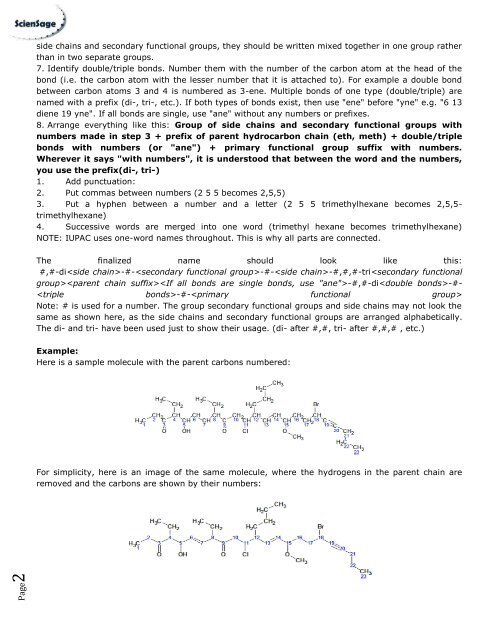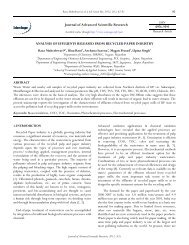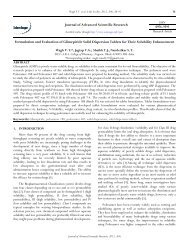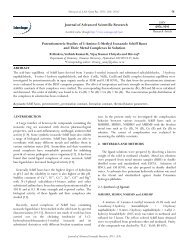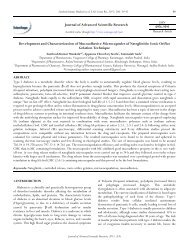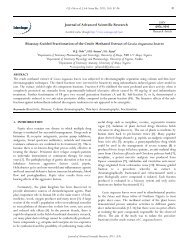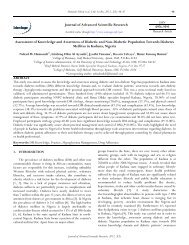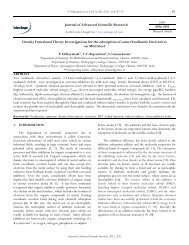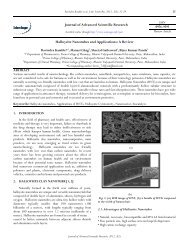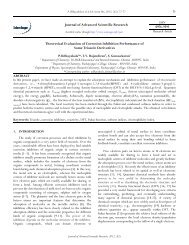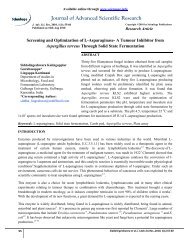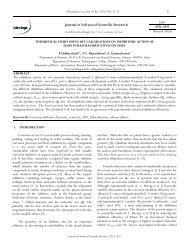iupac nomenclature of organic chemistry - Sciensage.info
iupac nomenclature of organic chemistry - Sciensage.info
iupac nomenclature of organic chemistry - Sciensage.info
You also want an ePaper? Increase the reach of your titles
YUMPU automatically turns print PDFs into web optimized ePapers that Google loves.
Page2<br />
side chains and secondary functional groups, they should be written mixed together in one group rather<br />
than in two separate groups.<br />
7. Identify double/triple bonds. Number them with the number <strong>of</strong> the carbon atom at the head <strong>of</strong> the<br />
bond (i.e. the carbon atom with the lesser number that it is attached to). For example a double bond<br />
between carbon atoms 3 and 4 is numbered as 3-ene. Multiple bonds <strong>of</strong> one type (double/triple) are<br />
named with a prefix (di-, tri-, etc.). If both types <strong>of</strong> bonds exist, then use "ene" before "yne" e.g. "6 13<br />
diene 19 yne". If all bonds are single, use "ane" without any numbers or prefixes.<br />
8. Arrange everything like this: Group <strong>of</strong> side chains and secondary functional groups with<br />
numbers made in step 3 + prefix <strong>of</strong> parent hydrocarbon chain (eth, meth) + double/triple<br />
bonds with numbers (or "ane") + primary functional group suffix with numbers.<br />
Wherever it says "with numbers", it is understood that between the word and the numbers,<br />
you use the prefix(di-, tri-)<br />
1. Add punctuation:<br />
2. Put commas between numbers (2 5 5 becomes 2,5,5)<br />
3. Put a hyphen between a number and a letter (2 5 5 trimethylhexane becomes 2,5,5-<br />
trimethylhexane)<br />
4. Successive words are merged into one word (trimethyl hexane becomes trimethylhexane)<br />
NOTE: IUPAC uses one-word names throughout. This is why all parts are connected.<br />
The finalized name should look like this:<br />
#,#-di-#--#--#,#,#-tri-#,#-di-#-<br />
-#-<br />
Note: # is used for a number. The group secondary functional groups and side chains may not look the<br />
same as shown here, as the side chains and secondary functional groups are arranged alphabetically.<br />
The di- and tri- have been used just to show their usage. (di- after #,#, tri- after #,#,# , etc.)<br />
Example:<br />
Here is a sample molecule with the parent carbons numbered:<br />
For simplicity, here is an image <strong>of</strong> the same molecule, where the hydrogens in the parent chain are<br />
removed and the carbons are shown by their numbers:


